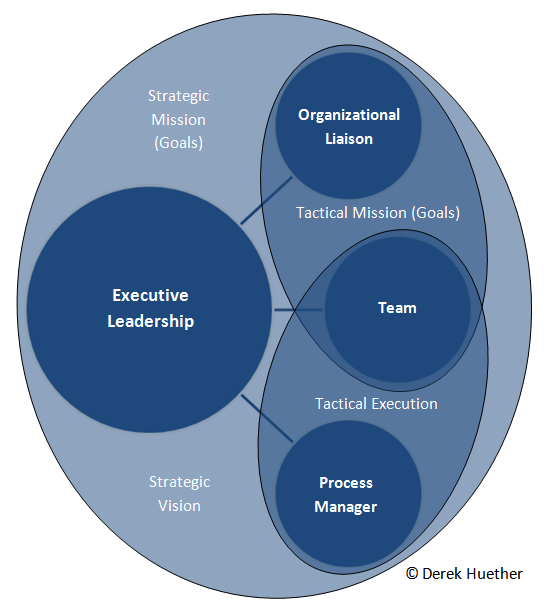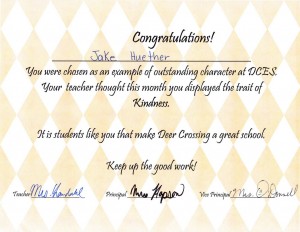 I was recently asked my opinion about collaboration within an organization. Being I just completed an organizational assessment for a client, I have a fresh perspective of the topic.
I was specifically asked:
I was recently asked my opinion about collaboration within an organization. Being I just completed an organizational assessment for a client, I have a fresh perspective of the topic.
I was specifically asked:
"Is it healthy for Scrum teams to work in a bubble protected from the business around them? Should collaboration go beyond the team?"
There are two common threads that I see time and time again. One, what is the goal? Two, is that goal communicated? Until these two threads are tied together, you can't have good collaboration. I don't see this being unique to the world of Scrum. To help illustrate my point, I'll try to use terms people outside the Scrum community can understand.
Strategic Mission (Goals)
Executive Leadership, in order to lead, needs to communicate the strategic vision of the organization. Strategic vision translates into strategic mission or long-term goals. Strategic mission should be understood by the entire organization. If you don't know the mission, how will you be able to help the organization reach its goals? From there, the leadership needs to empower people tasked to do the work to figure out how they will accomplish the goals.
Tactical Mission (Goals)
This is where you keep lines of communication open but insert a protective buffer. If you're leveraging Scrum, that first buffer is called a Product Owner. This person understands the strategic mission of the organization and is able to translate it into tactical mission. You could also refer to this person as an organizational liaison. This person or group of people don't need to know all of the answers. But, they do need to be readily available to answer questions from the team and to reach out to the appropriation organizational subject matter expert(s) when necessary. The second buffer, when leveraging Scrum, is called the ScrumMaster. If not leveraging Scrum, they could also be known as a process manager. This person understands organizational process on a team level and is there to ensure the team consistently follows that process. They also work to keep those who do not aid in tactical execution from derailing the team from getting work down.
Collaborative Team
It's time for me to answer the first direct question. Is it healthy for Scrum teams to work in a bubble protected from the business around them? Though I do believe the team should be protected from the business directly trying to change their tactical priorities, you should never operate in a vacuum. If people from within the organization do try to change team short-term priorities, the process manager (ScrumMaster) should be right there to impress upon them the needs of the organization and to respect the agreed upon processes.
Collaborative Organization
The second question was, should collaboration go beyond the team? My short answer is, yes. Communications is different from collaboration and it needs to flow up and down the organization. With information flowing freely, I've seen good (strategic) ideas become bad ideas overnight. All it might take is one executive standing in the back of the room during a daily (stand-up) meeting. Once the appropriate information is presented to the appropriate people, real collaboration can take place. The entire organization, which includes all cost and profit centers, needs to collaborate to discover the best solutions and work toward common goals.
What do you think?
Did I miss anything?



